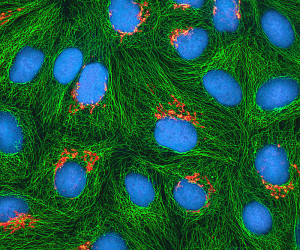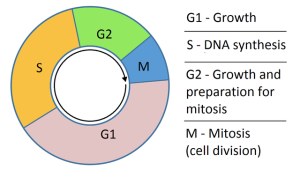Can Goji berry kill cervical cancer? A recent clinical experiment says Yes
Can Goji berry kill cervical cancer? In a recent (2013) scientific study, an experiment was carried out using goji berries to treat HeLa cells. In this post, we’ll take a look at the findings of this study as well as outlining how Traditional Chinese Medicine has used Goji Berries in medical treatments over many centuries.
Wolfberry (also called Goji berry) is one of the most popular ancient fruits in Chinese history. For over 5000 years, the ancient Chinese have used goji berries in their day-to-day diet. Since it can promote health and longevity, Goji berries have become one of the most important ingredients in Chinese herbal medicine over the past 2000 years. Today, many Chinese people continue to use Goji berries in their regular diet and practitioners of Chinese Medicine use this fruit as part of their medicine to treat various modern diseases.
In this article, I would like to present to you some scientific evidence on using Goji berries against human cervical cancer cells.
In January 2013, there was an experiment carried out using goji berries to treat Hela cells. In case you don’t know what HeLa cells are, the HeLa cell is a cervical cancer cell. It was taken from a woman, Helen Lacks, who died of cervical cancer in 1951. The HeLa cell is remarkably durable and prolific and at the time it was first identified, it contaminated many other cell lines used in research. Unlike many human carcinoma cells which can only survive for a few days in the lab, the HeLa cell can divide an unlimited number of times in a laboratory cell culture plate as long as fundamental cell survival conditions are present. The Hela cell is now, following its discovery, considered to be an immortal cancel cell.
Now let’s get back to looking at this experimental result where HeLa cells were exposed to Goji berry extract …
As I said, the HeLa cell can divide unlimited number of times and being immortal, after 62 years, in 2013, Goji berry extract was selected in an experiment for use against this human cervical cancer cell, HeLa.
This clinical Experiment Results and Conclusion
With the exposure to Goji berry extract, under the confocal microscope, researchers were able to observe the change in cell cycle distribution (cell damage) and bring on apoptosis (cell death). In addition, by observing the flow cytometry and an increase of intracellular Ca2+ concentration, the researcher was able to determine the loss of mitochondrial function in energy production. As the mitochondria are the “Powerhouse of the cell body”, the change of mitochondrial function leads to an arrest of energy production for the HeLa cell which in turn lead to it’s death.
Many research experiments have taken place over the past decades on Goji berries and their potential use in creating chemotherapeutic agent drugs to treat various types of human cancer . This is due to the fact that researchers were able to identify components of Goji berries responsible for arresting G0/G1 and S phase cell cycles (where the mother cancer cell replicates its DNAs for the next phase to divide into unlimited daugther cancer cells).
The experiment results concluded that that components of Goji berries can be developed as a potential chemotherapeutic agent candidate against human cervical cancer.
Food As Medicine
I hope the summary of clinical research presented in this article gives you some idea that food/herbs like Goji berries, which have been used medically by the ancient Chinese for over 5000 years, can have medical properties which can be used to treat modern diseases.
With empirical evidence that Goji berries can treat certain diseases as identified by the ancient Chinese physicians, this little bright orange fruit became a Chinese herbal medicine over 2000 years ago. Today, Goji berries remain a popular herbal supplement and food within China and continue to be used as a medicine to treat various diseases. As this fruit has exhibited many anti-aging properties and health benefits, it was investigated and researched by westerners and marketed by the westerner in the western culture as a health food.
If food can be used as medicine in ancient times to treat diseases, extend life span and slow down the aging process, no wonder pharmaceutical companies in the western countries are interested in extracting the therapeutic components of this little bright orange fruit to develop the next generation of potential chemotherapy drugs to kill cervical cancer and the like.
So, how can Goji berry kill cervical cancer?
Goji berries can kill cervical cancer in couple of natural ways. First, Goji berry can kill cervical cancer by stopping the cell cycle, preventing the cancer cell from replicating its DNA and dividing into more cancer daughter cells which can accumulate as a tumor. Secondly, it shuts down the cancer cell’s powerhouse (mitochondria) – stopping it from providing energy to the rest of the cell which in turn leads to apoptosis (cell death).
Based on the above research results, these and many other subsequent experiments have proven goji berries’ unique power in killing hepatoma / liver cancer (see references below). It would seem logical for us to use this food/herbal product in its natural form in our regular diet or as a herbal medicine to help prevent/treat cancer and to create and maintain a stronger body.
Using Goji berry to formulate a cancer recovery treatment plan based on Traditional Chinese Medicine (TCM)
As I mentioned, for over 2000 years, goji berry has become one of the most important herbal ingredients in many Chinese Herbal Medicine Formulae to balance health and promote longevity. However, medicinal herbs are rarely used singly to treat a disease. Many herbs with synergistic effects are usually combined to formulate a concoction (herbal formula) to treat diseases.
While Goji berry becomes a trendy snack in the western culture, in case of cancer, it may be wise to consult with a licensed traditional Chinese Medicine Practitioner and have a treatment plan formulated to help support your health and to recover from Cancer.
Disclaimer:
The purpose of this article is to present clinical data to the general public in a way which make it easier to understand the scientific and therapeutic views of food/herbs. The author of this article does not endorse any brand supplement or herbal products.
About the author:
Bernadette Yu is registered Traditional Chinese Medicine Practitioner within Ontario, she teaches Chinese Herbal medicine in one of the Chinese Medicine Schools in Toronto. She enjoys reading medical journals and experiment with food and herbs in her kitchen. She is a frequent speaker/presenter in topics related to Chinese Medicine and holistic nutrition. She gives seminars on a regular basis in the general public to promote the use of Chinese Medicine and dietary therapy to treat various types of diseases in a natural way.
Thank you for reading this article! Have a very blessed day!
References:
[1] http://www.ncbi.nlm.nih.gov/pubmed/22696075
Lycium barbarum polysaccharide inhibits the proliferation of HeLa cells by inducing apoptosis.
[2] http://www.ncbi.nlm.nih.gov/pubmed/26563650
Composition of Lycium barbarum polysaccharides and their apoptosis-inducing effect on human hepatoma SMMC-7721 cells.
[3] http://www.ncbi.nlm.nih.gov/pubmed/23817098
Characterization of Lycium barbarum polysaccharide and its effect on human hepatoma cells.
 Copyright secured by Digiprove © 2016 Bernadette Hayhurst
Copyright secured by Digiprove © 2016 Bernadette Hayhurst 




